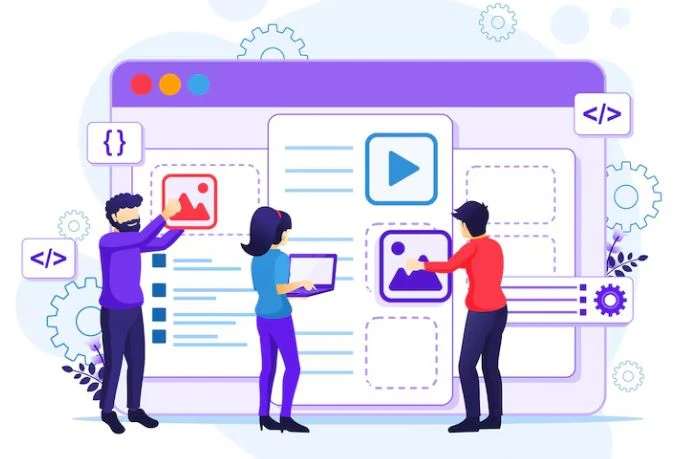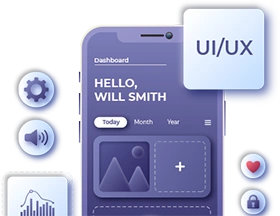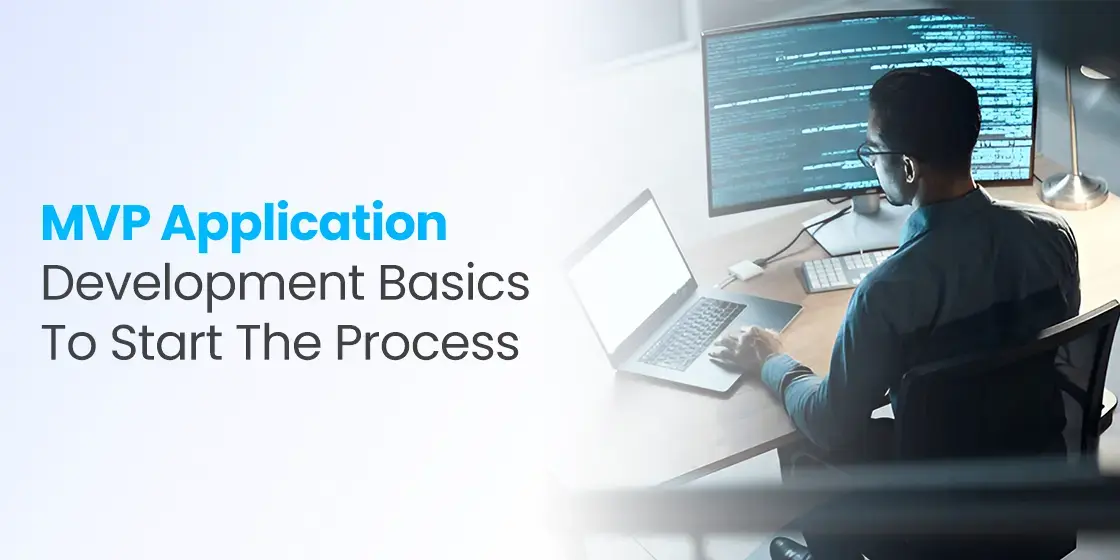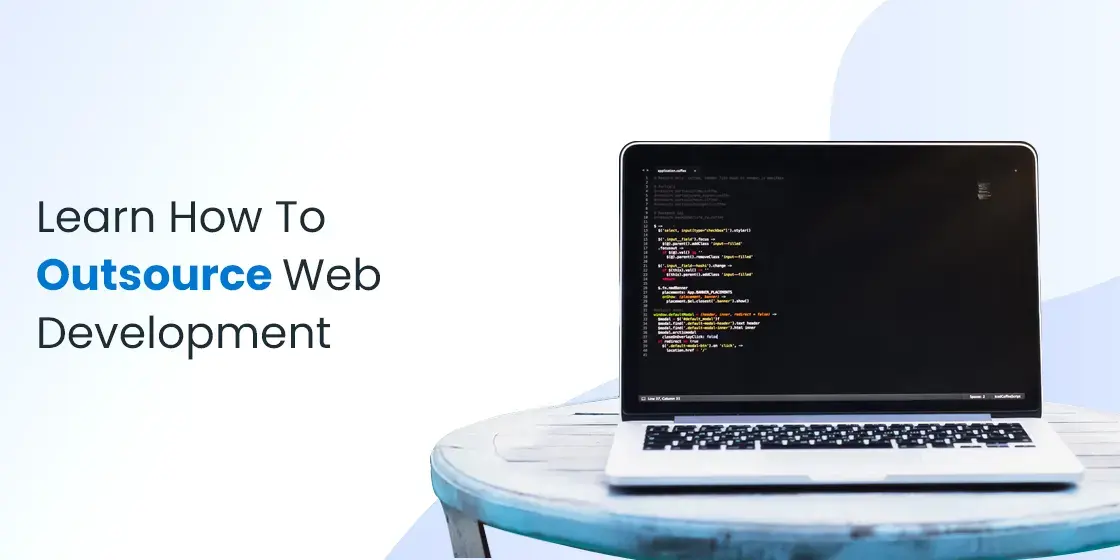Table of Content
Know How to Perfectly Build Any Minimum Viable Product
When building an application, it is always recommended to create a prototype first. This initial version of application is called MVP, and it features only the core functions of your platform. It is basically a concept validation software that lets you know whether the intended app features fulfills the market demands or not. Just like the core process, the MVP application development also requires clear planning. If you won’t pay attention to that, creating a minimum set of features would also become difficult for you.
There are many benefits of MVP application development. It not only lets you know the initial state of application, but also the improvements required in it. All the top software development services recommend to build MVP first before moving on to the actual development. It is a state of application that lets you know the performance of the software, and then feedback from the clients related to it. The development of prototype therefore do not take much time, making sure only core functionalities are built.
If you want to learn MVP application development process, read this blog in detail. It will let you know the basics of prototype app development, so that you can build initial app versions quickly.
Understanding What is MVP?

MVP (Minimum Viable Product) is a concept used in product development that refers to the most basic version of a product that can be released to early adopters. The goal of an MVP is to provide enough features to attract early users and validate a product idea early in the development cycle. This approach allows teams to collect maximum feedback with minimal effort, reducing the risk of building a product that fails to meet user needs or expectations.
The MVP strategy is commonly used in startups and agile development environments, where speed, adaptability, and learning from user interaction are critical. Rather than investing heavily in a fully-featured product upfront, MVP developers focus on delivering a functional core that addresses the main problem the product is meant to solve. Once the MVP is launched, user feedback is gathered and analyzed to guide future development, ensuring that new features and improvements are grounded in real user demand.
By adopting the MVP approach, companies can test assumptions about their business model, value proposition, and user behavior quickly and efficiently. This iterative process not only saves time and resources but also fosters innovation by encouraging teams to learn from actual usage patterns rather than hypothetical scenarios. Ultimately, an MVP helps bridge the gap between concept and market, allowing for smarter decision-making and better product-market fit.
MVP Application Development: How to Start the Process?

To start MVP app development, you need to follow a step-by-step approach. It will help you to move forward in a steady manner, ensuring accuracy in the final prototype of the product. Let’s take a look at these tips below.
Validate Your Idea
To create a successful Minimum Viable Product (MVP), it’s essential that the app directly addresses and fulfills the functional requirements of customers. An MVP should not be built solely based on assumptions or personal preferences; instead, it should reflect a clear understanding of what users actually want and expect. This involves identifying the core problem your app aims to solve and ensuring that the solution you’re proposing aligns with users’ real-world pain points and behaviors.
The most effective way to ensure your MVP meets these expectations is by validating your idea before development begins. Idea validation involves gathering feedback from potential users through methods such as surveys, interviews, or prototype testing. By validating your concept early, you minimize the risk of investing time and resources into a product that may not resonate with your audience, increasing the chances of building a product that gains traction and provides real value.
Turn your concepts into mobile apps brimming with advanced features. From inception to deployment, make a distinct impact in the market.
Contact Now
Understand Competition
To build a successful app MVP, it’s crucial to have a clear understanding of the competitive landscape. Analyzing your competitors allows you to see what similar products already exist in the market. This research helps you identify key trends, industry standards, and user expectations, which can inform the features and functionality of your own MVP. By studying what’s already out there, you can avoid reinventing the wheel and instead focus on creating a product that stands out and offers unique value.
Competitive analysis also enables you to pinpoint gaps and opportunities in the market that your MVP can address. With this knowledge, you can position your MVP more strategically, highlighting what makes your solution different or better. Ultimately, understanding your competitors isn’t about copying them—it’s about using their successes and failures as a foundation for building something more refined, user-focused, and competitive.
Focus on Key Features
Developing a MVP centers on building an app that includes only the most essential features. The goal is not to create a full-scale application from the outset, but rather to focus on delivering just enough functionality to provide value to early users and gather meaningful feedback. This approach helps streamline the feature-driven development process, reduce costs, and accelerate time to market, allowing you to test your idea with minimal risk and investment.
At this stage, it’s important to prioritize features that are absolutely necessary for the app to function effectively. Avoid the temptation to include additional, non-essential features that can dilute the user experience or delay development. Instead, concentrate on the functionalities that directly support your app’s core value proposition. By doing so, you ensure that your initial version is lean, purposeful, and focused—laying a solid foundation for future iterations based on user input and real-world usage.
Get Client Feedback
Gathering and acting on user feedback is a critical component of any MVP’s success. Once your initial product is in the hands of real users, their insights provide invaluable guidance on how well your app is meeting their needs. Feedback allows you to validate your assumptions, understand user behavior, and uncover usability issues or missing features that weren’t initially apparent during development. Without this input, you risk building a product that fails to resonate with your audience or misses opportunities for growth and improvement.
Equally important is the process of iterating based on the feedback you receive. Iteration involves making incremental changes to your MVP, enhancing the user experience, and addressing any problems users encounter. This continuous cycle of feedback and improvement helps you evolve your product in alignment with real user expectations and market demands. It also demonstrates to your users that you’re responsive and committed to delivering a high-quality solution.
Frequently Asked Questions
| What is MVP? A Minimum Viable Product (MVP) is the simplest version of a product that includes only its core features. It allows teams to gather real user feedback early to guide future development. |
| Why MVP prototype is important for developers? An MVP prototype is important for developers because it helps validate the product concept before full-scale development. It also provides a clear foundation to iterate on based on user feedback. |
| What type of features are included in MVP application? An MVP application includes only the core features necessary to solve the primary problem for its users. These features focus on delivering essential functionality while excluding extras that can be added later. |
Final Words
That brings us to the end of this blog in which we have discussed how the process of MVP application development works. Understanding the fundamentals of MVP application is important for developers, because it gives them a leverage to build key prototypes first. By launching an initial MVP product, teams can get various types of valuable information related to performance, errors and other stuff. It is therefore important to fully understand the process of MVP application development, because it can help in actual development with lots of market feedback.
Empower your digital initiatives with BariTechSol, a premier custom software development company. Our skilled team tailors cutting-edge solutions to your unique needs. Elevate your tech experience and stay ahead in the digital realm. Partner with BaritechSol and code the success of your next big idea.


